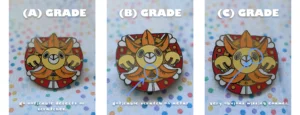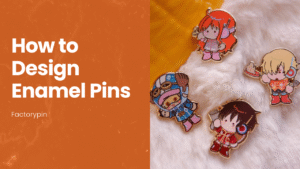Ever wondered what materials make up the coins jingling in your pocket? From everyday pennies to collectible gold coins, the materials used in coin production play a significant role in their durability, appearance, and value. This guide dives deep into the fascinating world of coin compositions, exploring their evolution, material properties, and global variations.
Common Materials Used in Coins
1. Modern Circulating Coins
- Copper: Durable, corrosion-resistant, and easy to work with, copper is a staple in modern coin production. Many coins include copper in pure form or as part of an alloy.
- Nickel: Known for its silvery appearance and strength, nickel is often alloyed with copper to create cupronickel coins. This blend balances aesthetics and durability.
- Zinc: Lightweight and cost-effective, zinc is commonly used as a core material, often plated with copper.
- Steel: Steel, often plated with nickel or another metal, is a cost-saving option for low-denomination coins.

2. Historical and Bullion Coins
- Silver: Historically, silver was a go-to material for coins due to its intrinsic value and shine. Today, it’s often found in commemorative or bullion coins rather than circulating currency.
- Gold: Reserved for high-value coins, gold is cherished for its rarity and aesthetic appeal, making it a preferred material for investment and collector’s items.
Global Examples of Coin Compositions
United States Coins
- Penny: Since 1982, the U.S. penny has been made of a zinc core with a thin copper plating, reducing costs while retaining its iconic appearance.
- Nickel: Composed of 75% copper and 25% nickel, it’s built to last with a sleek finish.
- Dime, Quarter, and Half Dollar: These are “clad coins,” featuring outer layers of 75% copper and 25% nickel around a pure copper core.
Euro Coins
- €1 and €2: These bi-metallic coins combine two different metal alloys, enhancing durability and security.
- Cent Denominations: Often made from copper-plated steel, these coins balance affordability with corrosion resistance.
Notable Historical Examples
- The British Pound coins once featured cupronickel but now use nickel-brass for a distinctive gold-colored appearance.
- Silver Dollars in the U.S., such as the Morgan dollar, consisted of 90% silver, making them both valuable and collectible.
Factors Influencing Material Choice
- Durability: Coins must withstand years of handling, so materials like nickel and steel are chosen for their resilience.
- Cost-Effectiveness: Base metals such as zinc and steel are more economical for mass production.
- Anti-Counterfeiting: Unique metal combinations and bi-metal designs enhance security.
- Weight and Size: Metals are selected to meet specific standards for coin size and weight, ensuring consistency in transactions.
The Evolution of Coin Materials
Modern Innovations
- Canada’s Eco-Friendly Coins: Steel cores with multi-layer plating reduce costs and environmental impact.
- Recycling Programs: Old coins are increasingly recycled to create sustainable minting options.
Future Trends
- With advancements in metallurgy and sustainability, expect more coins made from recycled and eco-friendly materials.

Why Coin Materials Matter to You
For collectors, investors, and everyday users, the material of a coin directly impacts its value and appeal:
- Collectors: Seek rare compositions like silver and gold for their historical and monetary worth.
- Investors: Prefer bullion coins made from precious metals as a hedge against inflation.
- General Public: Benefit from lightweight and durable coins that are easy to use and last longer.
Conclusion: Factorypin’s Expertise in Custom Coins
If you’re fascinated by coin materials or looking to create custom coins, Factorypin offers the perfect solution. With over 20 years of experience, we specialize in crafting coins using high-quality metals tailored to your design needs. Whether you need commemorative coins, challenge coins, or collectible items, our expertise ensures a flawless final product.
Ready to bring your vision to life? Contact Factorypin today to create custom coins that shine in quality and value.
FAQs
1. Are coins magnetic?
Some coins, particularly those with steel cores, exhibit magnetic properties. Coins made of copper, nickel, or zinc are generally non-magnetic.
2. Why did the US switch to zinc pennies?
The switch in 1982 was driven by rising copper prices, making zinc a more cost-effective alternative while retaining the penny’s iconic appearance.
3. What is a bi-metallic coin?
Bi-metallic coins feature two distinct metal alloys, often used in high-value coins to enhance durability and deter counterfeiting.





